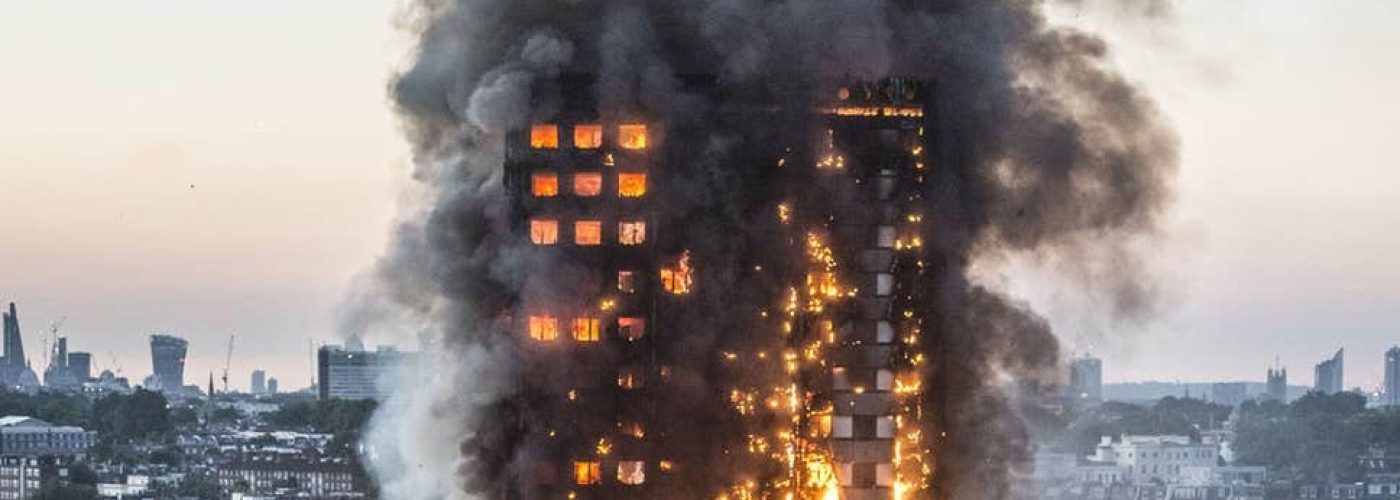Fire safety is serious business in the UK and throughout the developed world. Many people feel that we are generally overly cautious when it comes to fire safety with all our fire drills and regulations regarding fire safety. And if citizens and the general public feel this way, what’s left for building, design & construction professionals. Ensuring that all buildings are built and constructed in accordance with fire safety regulations often hikes up building costs, thus resulting in higher property prices.
However, we are in no way implying that fire safety regulations should be scrapped. On the contrary, they should be vigorously implemented. Recent Grenfell Tower tragedy showed us just how important fire safety regulations are. It also showed that additional elements like cladding should be added with caution, especially if the materials in question are flammable.
Fire safety regulations have a long history in the UK, so we decided to have a look at the historical events and developments that gave us the current legal landscape. Generally speaking, legislation of areas that are considered to be potentially risky, has been becoming a lot more restrictive lately. In certain areas like gambling, the changes have been more drastic and even though it is still legal to play casino games like White Rabbit slot the legal framework has gone through a series of changes. Fire safety regulations have been changing gradually over the centuries.
First acts from the 17th and 18th century
It is interesting to note that the first fire safety regulations predate the United Kingdom. There has been legislation governing fire safety in the Kingdom of England, Kingdom of Scotland and the Kingdom of Great Britain, all of which are predecessor states of the United Kingdom.
The first act in England that regulated construction of buildings and roads with the aim of fire prevention was passed shortly after the Great Fire of London of 1666. This event from over 350 years ago shows that legislation is more often reactionary than preventive. Other laws and acts were implemented in the following years. Scotland, i.e. the Kingdom of Scotland passed an act in 1698, following a number of fires in Edinburgh.
The Fires Prevention (Metropolis) Act of 1774 was the first thorough, all encompassing act that regulates multiple aspects of fire safety.
Modern legislation
The first piece of legislation that regulates fire safety in the United Kingdom was the Explosives Act of 1875, under which fire brigades were put in charge of storing explosives. The Petroleum Act of 1928 regulated the storage of petroleum and the operation of petrol stations.
A series of bylaws regarding building and other building regulation acts have been passed from 1930 onward. In fact, there were so many local bylaws that regulated building standards in different counties, areas, towns and cities, so that in 1936 with the Public Health Act as single set of regulations 1,400 different regional bylaws were replaced. The Public Health Act was amended in 1961, but its aim and scope remained the same.
Most regulations that have been implemented over the years were not retrospective. In laymen terms this means that buildings that have been built prior to the passing of the act in question weren’t required to be amended to meet the new regulations. This was the case until the Fire Safety Order of 2005 which requires all buildings, i.e. the responsible person for the respective building to conduct a risk assessment and ensure that the building has a sufficient level of fire safety.
The Fire Services Act of 1947 was the first act that gave fire brigades specific responsibilities and allowed the establishment of protocols and other internal acts and bylaws. The Fire Precautions Act was passed in 1971, but it was repealed by the above-mentioned Fire Safety Order if 2005.
The Building Act and the Fire Safety Order
When it comes to building and regulations that govern what sort of materials should be used, and what level of fire safety is to be implement in construction, the 1984 Building Act is the most important regulative Act in England Wales. In addition to provisions that regulate the building process, maintenance and reporting on safety is also regulated by the Building Act. Section 15 of the Act refers to the consultation with fire authority and includes provisions that regulate this area.
The last passed act and the one that’s currently in force is the Regulatory Reform Order of 2005, also known as the Fire Safety Order. This act was mentioned above, and it regulates all aspects and all areas within fire safety. The text of the law is divided into several parts, including a general part, a part that covers the fire safety duties, an enforcement part, offences and appeals are discussed in the fourth part and then there’s a miscellaneous part.
It is not difficult to predict that the current legislative will be amended, considering the number of local and nationwide initiatives that were launched lately, especially following the Grenfell Tower fire.





